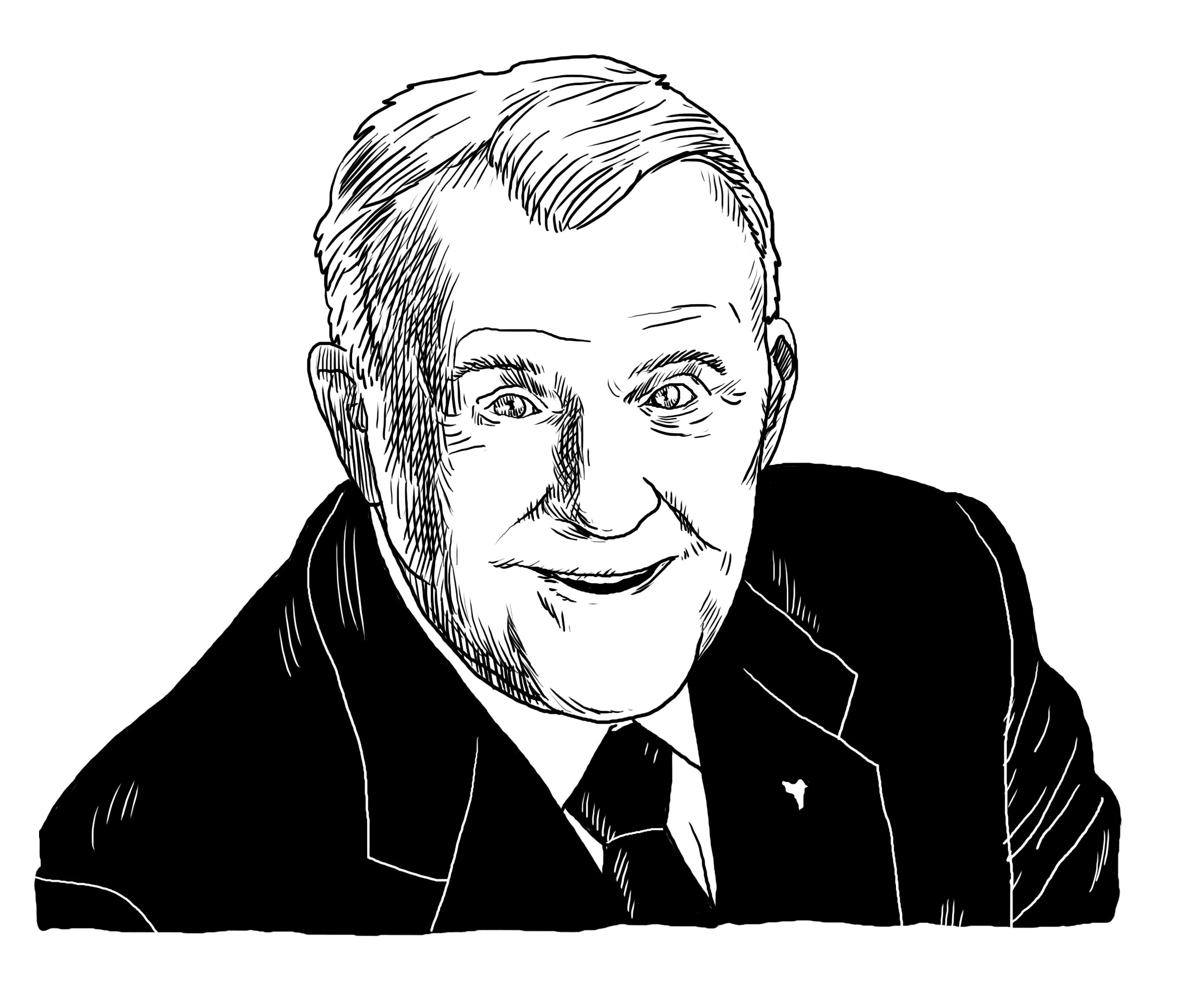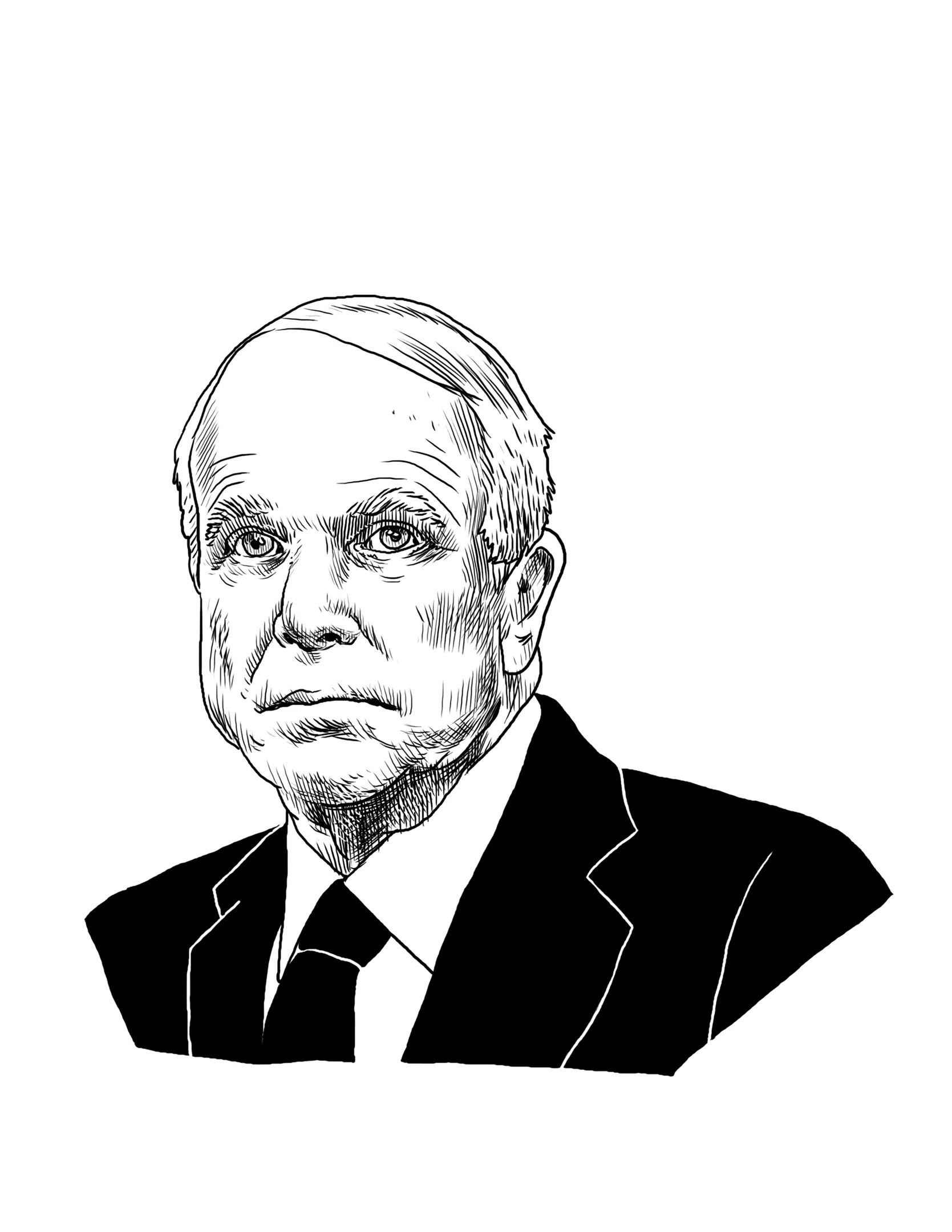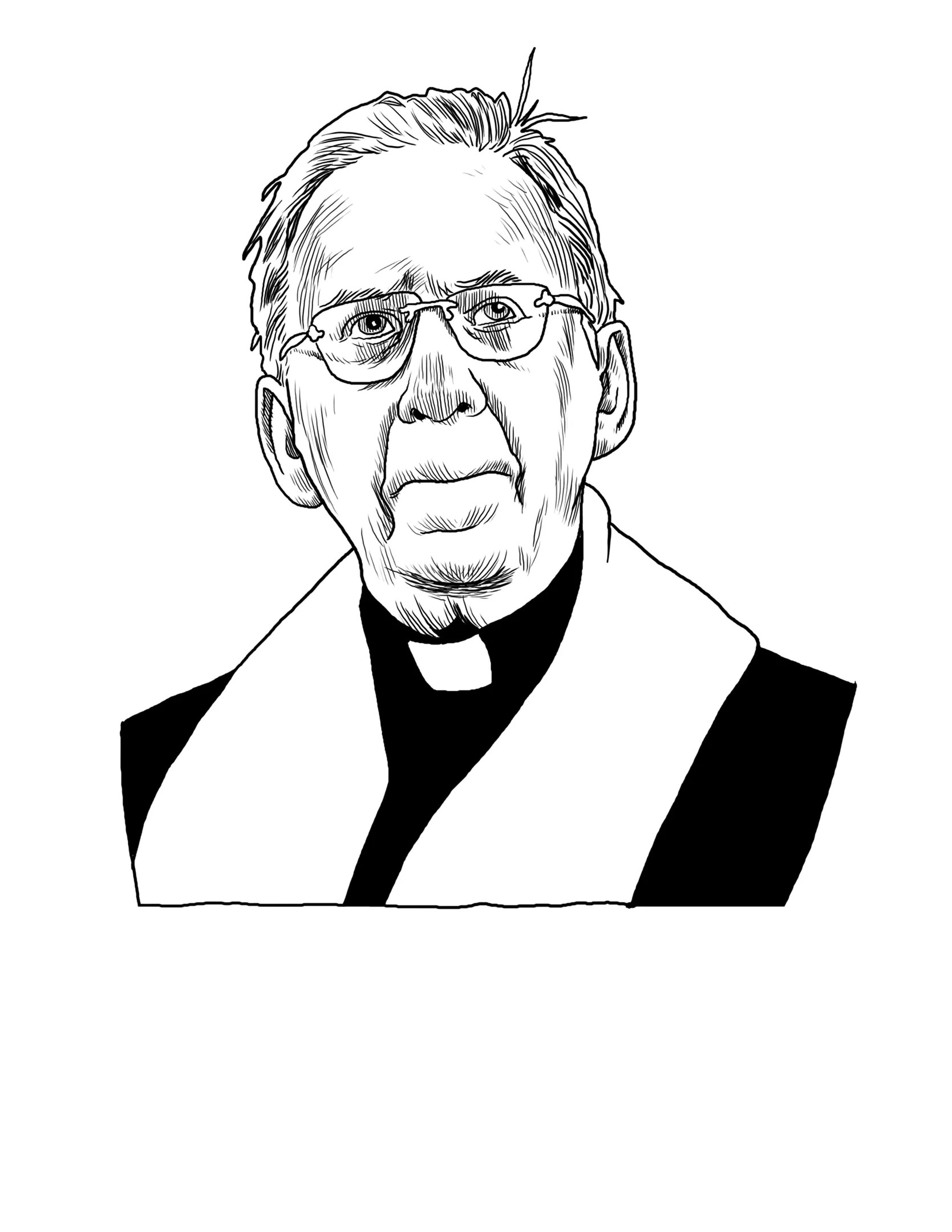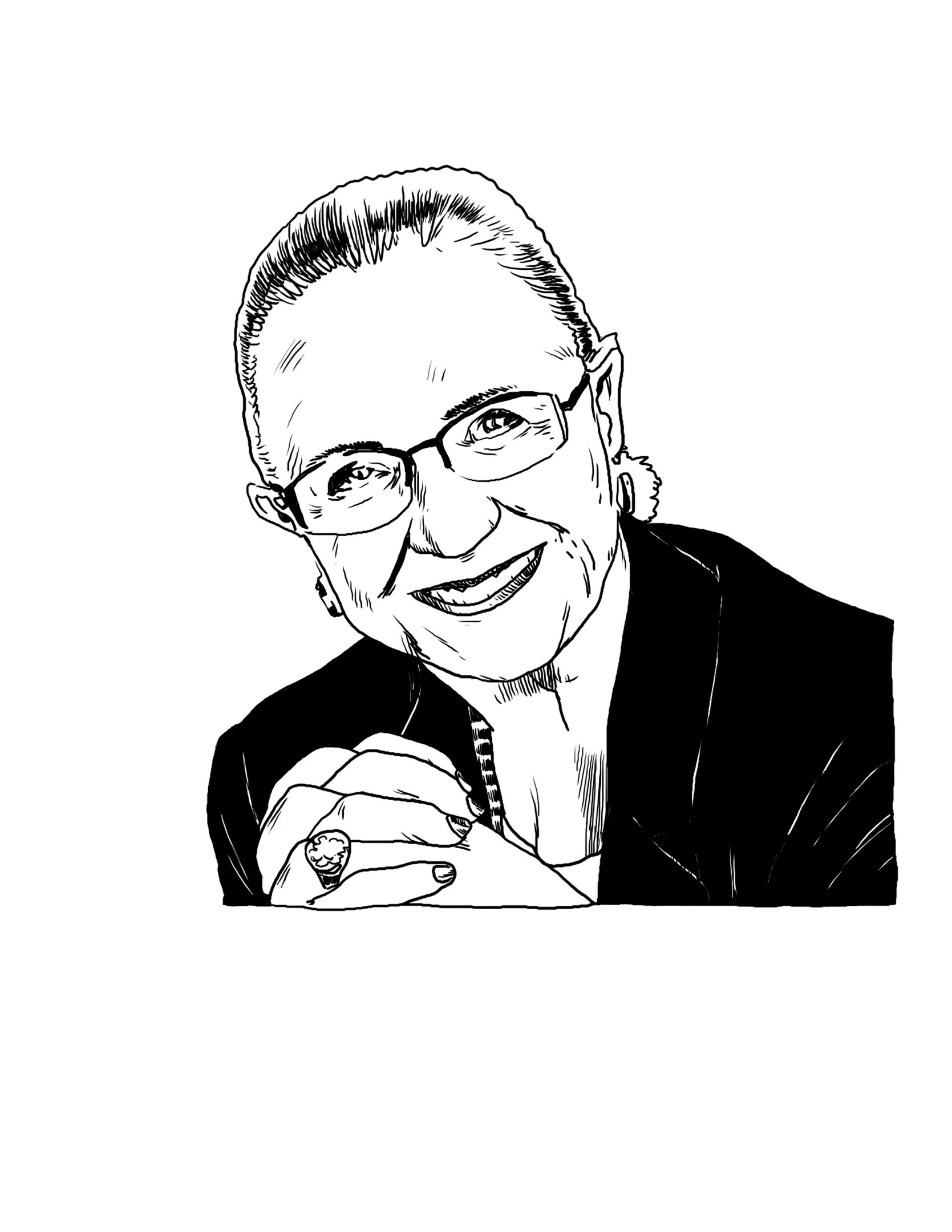
Luster Kaboom

Audio By Carbonatix

Luster Kaboom
These are among the Arizonans we lost in 2018. They weren’t all stellar individuals, but in ways large and small, their lives or their deaths had an impact on us all. May they rest in peace.
Bruce Halle
May 27, 1930 – January 4, 2018

Bruce Halle
Luster Kaboom
Will you step up to support New Times this year?
At New Times, we’re small and scrappy — and we make the most of every dollar from our supporters. Right now, we’re $15,500 away from reaching our December 31 goal of $30,000. If you’ve ever learned something new, stayed informed, or felt more connected because of New Times, now’s the time to give back.
Bruce Halle was full of contradictions.
Although he would eventually become the richest person in Arizona — when he died last January, Forbes estimated his net worth to be over $5 billion – Halle built his nationwide tire empire from pretty much nothing. The first Discount Tire store opened in Ann Arbor, Michigan, in a vacant building, which Halle rented for $400 a month. At that time in 1960, Halle had “six tires and a bunch of miscellaneous accessories,” he told a University of Arizona interviewer in 2017.
Selling tires is an unflashy business, but Halle and his wife, Diane, made a name for themselves as renowned art collectors, amassing a collection of hundreds of works that included stunning art from Latin America. The collection has been displayed in exhibitions at museums like the Art Institute of Chicago and Phoenix Art Museum. PAM received a gift from the Halles that allowed the museum to offer free admission on one Sunday every month, a tradition that has continued.
Even as he earned praise for his patronage of Latin American art and charitable giving, Halle drew criticism for his support of Maricopa County Sheriff Joe Arpaio. The sheriff’s racial-profiling abuses apparently didn’t give Halle pause, seeing as “Re-Elect Sheriff Joe Arpaio” signs appeared in Discount Tire stores during the 2016 election. Immigrant-rights groups opposed to Arpaio announced a boycott of Discount Tire in response.
In spite of these contradictions, when Halle died in his sleep at the age of 87, Discount Tire CEO Michael Zuieback memorialized him as “the most talented, respected, humble, and kind leader anyone could hope for.” Throughout his career, Halle said, he felt an enduring sense of loyalty to the people close to him.
“My first priority is to my family, for their welfare and their safety,” Halle told the U of A matter-of-factly. “My second priority is the welfare and safety of all of my employees. My third concern and responsibility are the communities where we live and work.” Joseph Flaherty
Kacie Clark
April 18, 1997 – January 17, 2018

Kacie Clark
Luster Kaboom
Twenty-year-old Kacie Elizabeth Clark was hit by a car on January 17 as she was walking home from a morning trip to CVS. She was declared dead at a hospital the following day. A few months before, she had returned to Phoenix, the area where she had grown up, in the hopes of starting adult life on her own.
Clark was born April 18, 1997. She spent her childhood through most of high school in the Phoenix suburbs, moving east during her junior year, when her mother got a job in Florida. She graduated from high school in Panama City in 2015, then moved to a suburb of Austin, Texas to live with her father.
She loved and had always found solace in music. Bands like Fall Out Boy, Avenged Sevenfold, and Pierce The Veil were among her favorites. She was an avid, committed concert-goer, one time saving up money for a plane ticket and traveling to Paris to see one of her favorite bands. Another time, she took a bus into Houston for a concert just before Hurricane Harvey hit.
After returning to Phoenix in November 2017, Clark started working at Taco Bell and continued traveling, as always, to concerts. She was outspoken about LGBTQ rights, and in the months before her death, she had also started speaking out on social media about her struggles with self-harm, from which she’d reached three years in recovery. In the days before she died, her father recalled, Clark told him she wanted to start taking college classes.
Phoenix New Times wrote about Clark in June, in a story that examined pedestrian deaths in Phoenix. On the day of the accident, Phoenix police arrested the driver, a 64-year-old man. Toxicology reports later showed the presence of THC, the psychoactive ingredient in marijuana, and its metabolites in his blood. Phoenix police say they have submitted charges to the Maricopa County Attorney’s Office, which does not appear to have filed any charges against the man, based on court records through late December. Elizabeth Whitman
Kyle Lawson
September 20, 1942 – February 1, 2018

Kyle Lawson
Luster Kaboom
The theater community loved Kyle Lawson, who died in February of congestive heart failure. That’s a rare thing for a theater critic: having actors and directors and stagehands love you.
Kyle hated being called a “critic,” although that was his billing at the Arizona Republic for many years. He told me often he couldn’t bear to lean too heavily on any production or performance, because he’d once been an actor himself. Kyle preferred writing features that promoted an upcoming play or musical, rather than critiquing one that was already on the boards.
It was one of the things we politely bickered about. “Have an opinion!” I’d yell, and Kyle would smile sweetly and then change the subject. He knew how theater people felt about critics, and he defended me tirelessly to theater folk who thought I was “mean” in print. (“Leave them alone and let them hate me!” I’d plead, but Kyle always refused.)
Kyle preferred to endorse, rather than criticize, the lives and work of others. He wrote long Facebook posts and even longer emails, lauding my writing career, my devotion to my husband, my decision to care for my elderly mother rather than place her in a facility. And he’d end every note with a sly reference to our disparate approach to criticism (“I’ve got this play I’d like you to read,” he wrote in one of his last emails to me. “Try to be kind.”).
The theater community lined up for weeks to pay tribute to Kyle, recalling his positive words and his more-than-fair approach to reviewing plays and playwrights and actors. They talked about his love for his dog, Bailey, about whom he wrote imagined conversations that he posted on Facebook; and about his wonderful relationship with his wife, Pat, who became Kyle’s full-time advocate when his health began to decline and his large heart began to finally fail him. Robrt L. Pela
Adam Coppa
June 1, 1985 – March 1, 2018

Luster Kaboom
Adam Coppa had only a few months left to serve when the riot broke out at the Cheyenne Unit of the Arizona Prison Complex – Yuma on March 1. The spark that lit the fire was an altercation between a drunken inmate and five or six correctional officers. Along came literal fire. Inmates set mattresses aflame, threw rocks at guards, and toppled fences during three hours of violent mayhem at the medium security prison on the edge of town.
Twenty-six inmates and 11 guards were taken to hospitals with non-life threatening injuries. One inmate, Coppa, was killed. According to a report from the Arizona Department of Corrections, Coppa died by gunfire (“12 gauge buckshot round).” He was 32 years old.
KJZZ’s Jimmy Jenkins, who dutifully covers Arizona state prisons, spoke with an inmate who considered Coppa a friend. According to Joshua Fecht, Coppa got caught up in the frenzy of the moment. “He kinda lost his mind,” Fecht told KJZZ. Coppa was among a group of inmates who were advancing toward correctional officers when the shot was fired, Fecht said.
Not much is known about Coppa’s life outside his criminal history and prison disciplinary record. When he was 15 or 16, Coppa was arrested for robbing a Benson Chevron on Thanksgiving Day. He was one of three California teenagers who faced charges for the stickup, the San Pedro Valley News Sun reported. Coppa then started working on his prison rap sheet: disorderly conduct, throwing items, drug possession.
He was eligible for release in March. What dreams did Coppa harbor? What life did he imagine after walking out the doors one more (and hopefully final) time? Records show that in prison, Coppa worked as a porter, a groundskeeper, and construction technician. Steven Hsieh
Steve Gompf
April 27, 1963 – March 4, 2018

Steve Gompf
Luster Kaboom
Mesa artist Steve Gompf surrounded himself with eclectic objects from bread molds to door knobs, transforming them into sculptures he called televisors. He’d add moving images inspired by 19th-century photographer Eadweard Muybridge, playing with tenuous boundaries between fiction and fact by positioning his works as precursors to modern-day technology.
Gompf died in March, after decades spent not only making his own work, but also helping to build the local arts landscape. He was 54. “Steve was an instrumental person in the downtown arts scene for many years,” said Phoenix artist Beatrice Moore. Another creative, Steve Weiss, praised Gompf for his film skills, passed on through teaching college students. “He also helped elevate film as a locally produced art form,” Weiss said.
Gompf’s work is part of the collection at Mesa Contemporary Art Museum, where his 2016 solo exhibition was called “Distant Visions: Apparatus and Ephemera from the Televisor Era 1884-1928.” Sometimes he’d sit outside the gallery space, watching how visitors reacted to his pieces and the made-up histories he’d written for each one, which were posted beside them.
Through the years, his work was also shown at several staples of the Phoenix arts scene, including Alwun House and Lisa Sette Gallery. For years, Gompf was part of the annual “Chaos Theory” art show. This year, organizer Randy Slack payed homage to the artist by showing Gompf’s video, Parade: The Absolute End of the World, during the exhibit.
Even so, Gompf is being remembered for more than his many creative endeavors.
“Steve was one of those rare individuals who is so secure in his own personality that he remained fun, graceful, and endearing, no matter how he was behaving,” artist Richard Blesdoe shared after Gompf’s death. “He was intense, brusque, generous, and playful, all at the same time.” Lynn Trimble
Elaine Herzberg
August 2, 1968 – March 18, 2018

Elaine Herzberg
Luster Kaboom
In life, Elaine Marie Herzberg was a nobody. Another of the near-invisible people moving in the back alleys of “decent” society. Forty-nine years old, her life had been an utter failure by most measures. She had no hope of raising serious money for her family or achieving a level of fame most Americans will never see.
Her death changed all that. At about 10 p.m. on March 18, Herzberg became the first person in the history of the world to be killed by an autonomous vehicle. Technology experts and university professors worldwide were startled by the news, which made the front-page of all major newspapers. Herzberg’s death, as infamous as it would become, should have never happened.
Phoenix is one of the most dangerous cities in the country for pedestrians. Autonomous vehicles are supposed to change all of that. Arizona Governor Doug Ducey encouraged the technology, inviting tech companies to come experiment on the state’s public roads with little oversight. Uber’s AV program had been running for about a year when one of its Volvo’s in autonomous mode plowed into Herzberg as she crossed Mill Avenue mid-block with her bicycle. The evidence showed that backup driver, Rafaela Vasquez, had been streaming a TV show on her cellphone and looking down in the seconds before impact. It remains unclear who was most responsible for the crash, legally — Herzberg, Vasquez, or Uber.
None of that matters much to her friends and family, some of whom are ex-cons and hard drug users like she was.
Herzberg graduated from Apache Junction High School in 1985 and lived most of her life in the east Valley. Her husband, Rolf Ziemann, who received an undisclosed settlement payoff not long after the incident, wrote to a court in 2015 that his wife suffered from depression. His plea to keep her out of prison for a probation violation on a drug charge fell on deaf ears, and she served a year and a half behind bars.
More recently, in between posts of expensive vehicles, Ziemann expressed his grief on Facebook: “R.I.P ELAINE MARIE ZIEMANN… UR LIFE WAS TAKEN WAY TO EARLY, IT DEVISTATED UR DAUGHTER AND I!!!! I HOPE TO SEE YOU ON THE OTHER SIDE, CANT WAIT TO LEAVE THIS HELL THEY CALL EARTH.” Ray Stern
Devin Fleenor
March 21, 1971 – March 29, 2018

Devin Fleenor
Luster Kaboom
Phoenix light artist Devin Fleenor had a rare gift for blending disparate elements into beautiful hybrids of humanity. Musician and artist. Technician and aesthete. Philosopher and protester. Fleenor translated the metaphorical light he channeled through everyday encounters into literal light, created with RGB lasers, for house parties, concerts, and other gatherings infused with high energy, creativity, and bliss.
Fleenor never missed a beat, despite living with a rare immune disorder that wreaked havoc on his lungs and led to repeated hospitalizations. Before complications caused his death on March 29, he spent two decades lighting up the local arts and culture scene, playing in the band Mr. Meeble, busting out quirky DJ sets, launching an interactive lighting design company, and pondering life’s complexities with fellow travelers through the universe he called home.
“He was always asking big questions about important things and constantly talking about love,” his fiancée, Karina Niño de Rivera, recalled after Fleenor’s death. Just 47 when he died, Fleenor was widely respected by fellow creatives, who weighed in on social media to share their memories after hearing the news. Daniel Funkhouser recalled Fleenor’s generous and fearless ways, and Mary Stephens his curiosity and kindness.
Fleenor brought those same qualities to his pursuit of justice, vigorously protesting Joe Arpaio for his many failures as Maricopa County’s sheriff. He launched a popular anti-Arpaio website and Facebook page, made a video about hundreds of sex crime cases being mishandled, and chained himself to Arpaio’s Fourth Avenue Jail during protests over anti-immigrant legislation. Even those who never met Fleenor took note, including Gabe Gonzalez, who credits Fleenor with inspiring him to join the protests.
“This world lost an artist, a soldier and an amazing human being,” Gonzalez wrote on Fleenor’s Facebook page following his death. “The things he did is [the] stuff of legends.” LT
Rodney Lewis
November 15, 1940 – April 10, 2018

Rodney Lewis
Luster Kaboom
Rodney Blaine Lewis’ name still surfaces regularly at water meetings in Arizona, and when it does, drought negotiators will put aside their differences and recall Lewis with admiration and respect, if not veneration. A member of the Gila River Indian Community, Lewis set milestones throughout his career: He was the first Native American attorney to argue and win a case before the United States Supreme Court, in 1980, and the first to practice law in Arizona. In March 2017, he became the first Native American to serve on the board that manages the Central Arizona Project.
As the general counsel of the Gila River Indian Community, Lewis was also instrumental in negotiations with the federal government, Arizona, and more than 30 other groups that led to the 2004 Arizona Water Rights Settlements Act. The law guaranteed billions of gallons of water for tribes in Arizona and to this day is the largest tribal water-rights settlement in the U.S.
Lewis was born and grew up in Casa Blanca. He started first grade with the person who would eventually become his wife, Willardene. In high school, he was a star basketball player, and he continued playing in college at Trinity University, in San Antonio. After he graduated in 1962, he joined the U.S. Army Infantry and was honorably discharged in 1965 as a first lieutenant. He subsequently earned a master’s degree in history from Arizona State University, then his JD from the University of California, Los Angeles.
After Lewis died in April at age 77, leaders throughout Arizona spoke of him not just as a legal trailblazer but as a public servant and a generous person who was devoted to his community
“My father was a visionary and a trailblazer,” his son, Gila River Governor Stephen Roe Lewis, told the Arizona Republic. “He influenced and mentored generations of both non-Indian and Indian attorneys, not only in Arizona but nationwide.” EW
Steven Pitt
March 29, 1959 – May 31, 2018

Dr. Steven Pitt
Luster Kaboom
Steven Pitt, the forensic psychiatrist who spent a career studying the minds of murderous criminals — including the Columbine shooters, the Baseline Killer, and the unknown assailant who took the life of Little Miss Colorado JonBenét Ramsey — met his own fate as a victim of the sort of serial killing spree he might’ve been called upon to interpret. He was 59 years old.
With a gruff cadence and calm demeanor, Pitt helped the public make sense of some of the most heinous and high profile crimes in recent American history, appearing on CNN, Entertainment Tonight, and Valley news stations. But friends say he never sought the spotlight. Phoenix attorney Dan Barr told azfamily.com that Pitt was generous with his time because he felt it important for people to “understand the intricacies and nuances of the story.”
Pitt became well known for offering his services to cops and prosecutors. Most famously, after 6-year-old Ramsey’s murder brought national media attention to Boulder, Colorado, the district attorney of that city hired Pitt as a consultant. In a 1999 interview with New Times, that D.A, Alex Hunter said of Pitt: “He gave us insights in terms of ‘profiling’ people that we were looking at that I thought were beyond all of our expertise, important, helpful stuff. He’s tough and tenacious, and he isn’t just a book kind of guy.”
Pitt was the first of six to die in a multiday, multicity killing spree by suspect Dwight Lamont Jones, who eventually took his own life as police zeroed in on him. Jones, who was court-ordered to talk with Pitt during his divorce proceedings, allegedly shot the psychiatrist outside his Scottsdale office on May 31. Jones then allegedly went on to claim five other victims.
“Steve would have enjoyed this case,” said Darryl Pitt, the psychiatrist’s brother, during his memorial service. SH
Kate Spade
December 24, 1962 – June 5, 2018

Kate Spade
Luster Kaboom
Katherine Brosnahan came to Arizona for school. She attended ASU, pledged Kappa Kappa Gamma, and graduated from the Cronkite School of Journalism in 1985, leaving the state for a job in the accessories department at Mademoiselle, a New York fashion magazine. It was there that she discovered a fashion market that wasn’t being catered to — affordable, stylish handbags for women of all ages — but it’s here where she met her husband, Scottsdale native Andy Spade, while working at a boutique.
That’s where the name Kate Spade New York originated, and it has gone on to become one of the most prolific names in women’s fashion. In the 1990s, the maturely styled yet affordable bags exploded onto the scene. Vogue editor Anna Wintour noted at one point that it was impossible to walk a block in Manhattan without seeing one. Millions of American women have a Kate Spade bag. When I went home for Thanksgiving this year, my mother was using one. They are ubiquitous, iconic, and beloved.
But as much as there is to say about Spade’s life and work, there is unfortunately just as much to say about the way she died. Her body was found on June 5 in her apartment, ruled a suicide by hanging.
Hers is, of course, not the only high-profile suicide this year: Anthony Bourdain, the iconoclastic chef, writer, and TV host, was found dead in a hotel room near Strasbourg, France, also in June. The successive shocks of these two deaths prompted international soul-searching. Why would they kill themselves? They were so successful, so worldly, and yet they were suffering in a way that could not be seen. In this, they are not alone.
Suicide is, at present, a national epidemic. The Centers for Disease Control and Prevention counts it as the 10th-biggest cause of death in the United States; the American Foundation for Suicide Prevention reports there were over 47,000 suicides in 2017 and estimates 1.3 million attempts in the same year. We will not speculate as to why people are killing themselves at such rates, but the cases of Spade and Bourdain imply that the disease transcends class. Anyone can be driven to the brink.
If there is a way to stem the tide, however, it is simple: If you know someone who you believe to be suicidal, talk to them. Reach out to them. Let them know that they’re in your thoughts. This is not a sentimental statement; as the pioneering psychiatrist Jerome Motto found, sometimes just sending a message to a suicidal person is enough to keep them alive. We live in a lonely age where people are distanced by the cruelties of capitalism and the absurdities of the digital realm. It is so easy for people to fall into despair. Douglas Markowitz
Kitambi
September 22, 2009 – August 21, 2018

Kitambi
Luster Kaboom
The 8-year-old male African lion Kitambi (ki-TAHM’-bee), one of the major attractions at the Phoenix Zoo, died on August 21. He had had a systemic infection that started to show a few days before he died, when he seemed to be lame and started to grow lethargic. After he lost interest in eating, the zoo’s animal care team anesthetized and examined him, finding an infection in his rear right leg. Despite antibiotics and IV fluids, Kitambi did not survive.
Kitambi was born September 22, 2009, at the Columbus Zoo in Ohio, alongside two sisters, Adia and Mekita. The staff there named him Kitambi, which means “pride” in Swahili. He and his sisters were the first African lion cubs born at the Columbus Zoo in nearly 25 years. In November 2011, Kitambi was moved to the Phoenix Zoo, arriving on a FedEx flight with an Andean bear. Lions in captivity can live up to 20 years, according to the Smithsonian Institute. In the wild, males do not usually live beyond 12 years.
Kitambi’s territorial roar and his majestic, shaggy mane were a few of the reasons he was so popular. After he died, the Phoenix Zoo described Kitambi as “an experience,” not just an animal. His stately presence, which you can still sense in photographs of him, commanded awe and respect. EW
John McCain
August 29, 1936 – August 25, 2018

Senator John McCain
Luster Kaboom
Let’s face it. New Times never had a clubby relationship with Senator John McCain. We exposed many of his and Cindy McCain’s flaws and they didn’t appreciate it. We saw him the way many in his adopted state saw him.
He was “America’s senator, not Arizona’s” Amy Silverman wrote in his obituary. And that perhaps was one of the kindest things we said about him through the years.
But this is not the time to revive old feuds. We’ve had our say. Now, let’s let him have the last word in this excerpt from his farewell read at his funeral:
“I lived and died a proud American. We are citizens of the world’s greatest republic, a nation of ideals, not blood and soil. We are blessed and are a blessing to humanity when we uphold and advance those ideals at home and in the world. … We weaken our greatness when we confuse our patriotism with tribal rivalries that have sown resentment and hatred and violence in all the corners of the globe. We weaken it when we hide behind walls, rather than tear them down, when we doubt the power of our ideals, rather than trust them to be the great force for change they have always been. …
“Ten years ago, I had the privilege to concede defeat in the election for president. I want to end my farewell to you with the heartfelt faith in Americans that I felt so powerfully that evening. I feel it powerfully still. Do not despair of our present difficulties but believe always in the promise and greatness of America, because nothing is inevitable here. Americans never quit. We never surrender. We never hide from history. We make history.” Stuart Warner
Bishop Thomas J. O’Brien
November 29, 1935 – August 26, 2018

Bishop Thomas J. O’Brien
Luster Kaboom
You have to think that when he was a teenager studying in the seminary in Indianapolis, that Thomas J. O’Brien had pure intentions as he set out on a path to the Catholic priesthood, that he planned to devote his life to helping others. And along the way, he did some good, according to the Arizona Republic, lobbying the state to acknowledge the Martin Luther King Jr. holiday, urging families not to disown LGBTQ children, and facilitating an interfaith community.
But somewhere on his heavenly journey, O’Brien took a hellish turn that helped inflict inexplicable pain for dozens of innocent children and their families. Maybe he became addicted to the trappings of power as he rose to the rank of Bishop of the Diocese of Phoenix and didn’t want to let go. Or maybe there is such a thing as selling your soul.
But by the time O’Brien’s 22 years as bishop ended in 2003, the Phoenix Diocese had reported at least 30 priests, deacons, and other employees were involved in sexual abuse of minors. And O’Brien had done next to nothing to stop it, concealing the transgressions from the public for as long as he could.
Perhaps no case was more egregious than that of Father Wilputte Alanson “Lan” Sherwood, who was finally sentenced to 10 years in prison in 1993 after police uncovered diaries and home movies detailing sexual encounters with 22 underage boys. Even though Sherwood was first arrested for masturbating in an adult bookstore in 1986, New Times reported that he didn’t even get a stern lecture from the bishop and was allowed to continue his ministry.
Nevertheless, O’Brien clung to his exalted position until 2003, when he left after a plea agreement with the county that cost the diocese hundreds of thousands of dollars.
But he wasn’t charged with anything criminally until he until his car struck and killed a man shortly after he stepped down as bishop, leaving the scene of the accident without even stopping to see if the pedestrian had been injured.
RIP Thomas J. O’Brien? Probably not. SW
Scott Sanders
March 19, 1971 – August 26, 2018

Scott Sanders
Luster Kaboom
Scott Sanders loved to create. As an artist, he worked in a variety of mediums throughout his life, ranging from sketching Looney Tunes characters as a kid to creating surrealist oil paintings as an adult.
“Having the ability to use one’s imagination and bring to life a canvas that is not only beautiful, but may also convey some sort of meaning, is an incredible process,” Sanders wrote in his artist’s statement. “This phenomenon is what drives me to create.”
One of his best-known creations wasn’t a particular piece of art, but instead was a famed mid-aughts cultural space, The Paper Heart, in downtown Phoenix. Long before Crescent Ballroom existed, The Paper Heart served as a talent incubator and platform for a variety of local creatives — musicians, visual artists, poets, dancers, and comedians alike — regardless of their stature in the scene. Local acts like Romantasy Cabaret got its start there, as did improv comedy troupe Galapagos and local DIY spot Trunk Space (which started out as a coffee cart inside The Paper Heart).
“Scott wanted to feature all these different kinds of art and performance,” said friend Vaiden Boyer, who ran the venue alongside Sanders. “He gave opportunities to all artists, even those who didn’t have the connections others had.”
And Sanders, who died of lung cancer in August, had a passion for showcasing their talents.
“Scott loved to foster creative energy in other artists, influencing them to use their own skills and to go their own creative route,” said his widow, Dawn Admire-Sanders.
The Paper Heart began as an online gallery in 2000 before becoming an actual gallery at Fifth Avenue and Van Buren Street a year later. In 2004, Sanders moved things to a former Chevrolet dealership along Grand Avenue in 2004.
While the venue was ultimately short lived, closing in late 2007 due to financial struggles, its influence is felt today. Several venues, including The Van Buren, are thriving nearby and the old Paper Heart space is in the process of becoming the soon-to-open cultural space, The Rev.
“Scott was really proud of The Paper Heart and everything we did there, and he remained proud of it up until the end,” said Boyer. Benjamin Leatherman
Carolyn Warner
August 2, 1930 – October 9, 2018

Carolyn Warner
Luster Kaboom
Former superintendent of public instruction Carolyn Warner was a fixture of Arizona politics for more than a decade. She paved the way for women leaders in government. But her longtime aide and business partner will also tell you that Warner had a great sense of humor — not to mention a wicked tongue.
“If the occasion seemed to demand it, Carolyn could cuss as well as anybody,” David Bolger said.
He recalls one instance during Warner’s unsuccessful campaign for governor in 1986. A prospective donor had asked for a favor if Warner were to get elected in exchange for “a very large campaign contribution.”
“Carolyn said to our campaign manager, ‘You tell that son of a bitch that he can keep his money and whatever else he has, and stay the hell away from this campaign,’” Bolger said.
Warner was born in Oklahoma to a father who served as a state senator and a mother who worked as a schoolteacher and principal. In 1953, Warner moved to Arizona, where she and her husband, Ron, raised six children while building their furniture and interior design business. After serving on the governing board of the Phoenix Union High School District, Warner was elected state superintendent, becoming the first non-educator ever to hold the office. She served for three terms from 1975 to 1987.
“In pretty much every respect, Carolyn was a trailblazer,” said Bolger, who served with Warner for 40 years. “She proved that a woman could win, she proved that a woman could be an effective administrator of a large state agency.”
In fact, in another timeline, Warner might have become the first woman to govern Arizona. In 1986, after she secured the Democratic nomination for governor, Warner lost to Republican Evan Mecham in a three-way general election contest, thanks in part to an independent candidate who jumped into the race.
As it happens, Mecham’s governorship ended in scandal and resignation, resulting in the elevation of Secretary of State Rose Mofford, instead of Carolyn Warner, to become the state’s first female governor. JF
Ed Pastor
June 28, 1943 – November 27, 2018

Ed Pastor
Luster Kaboom
Was Ed Pastor winking at his mourners from the Great Beyond? That’s one possible interpretation of the funeral card given out at a Catholic mass for the late congressman held a little over a week following his death at age 75 from a heart attack.
On the front is a photo of the smiling, avuncular politician, known for being the first Mexican-American elected to Congress from Arizona. On the reverse is the introduction to the Rolling Stones’ 1968 hit, “Sympathy for the Devil,” which begins, “Please allow me to introduce myself, I’m a man of wealth and taste.”
The card struck many as being an odd choice for a man credited with so many good works during his 23 years as a U.S. representative. As a congressman, Pastor secured crucial federal funding for light rail, improvements to Sky Harbor, and countless other projects large and small. A miner’s son from Claypool, he proved a reliable, Democratic vote on progressive causes till his retirement in 2015.
Sources say the former congressman, a huge Stones fan, picked the quote, which, like the rest of the song, was co-written by Mick Jagger and Keith Richards from the point of view of Satan as he gloats over his historical triumphs.
Community organizer Roberto Reveles maintained a 55-year friendship with Pastor and his family. Reveles found the card “reflective of his modest character.” He said Pastor didn’t want to be regarded as an icon, though many in the Latino community view him as a model of public service and achievement.
But Phoenix human rights activist Sal Reza, who worked with Pastor behind the scenes on various issues, pointed to Pastor’s dry sense of humor.
“Perhaps he was giving us a hint about the trappings of power,” Reza said. “A warning. That’s the way I see it.” Stephen Lemons